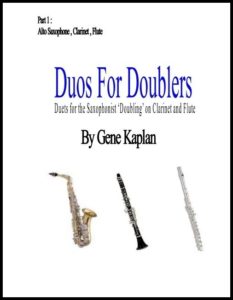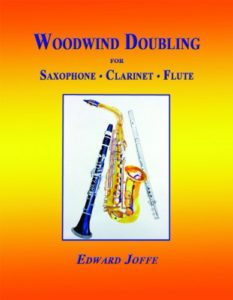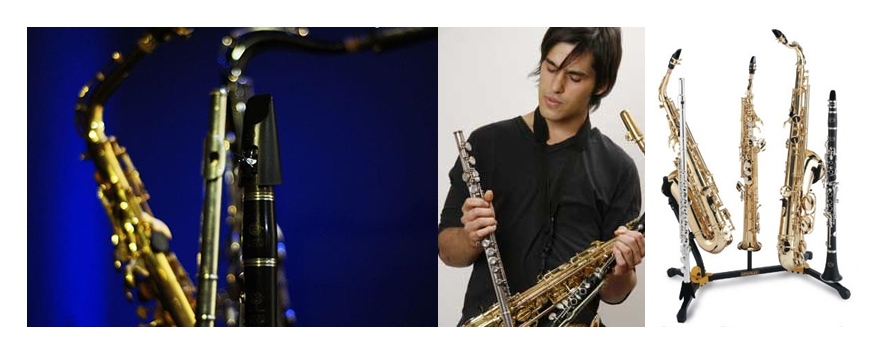
Don’t Start Saxophones in Your Beginning Band – A Successful Alternative
By Ray Benton, Nottelmann Music Co. –
Well, this one will certainly cause some controversy! But band directors, I ask that you be open minded and hear me out. In my eleven years at Rockwood South Middle School, we found tremendous success with a different approach to teaching saxophone. Here are THE BENEFITS, THE PROCESS, and THE RESULTS.
THE BENEFITS
- Achieve Optimum Program Instrument Balance. If you’re like me, you have found the saxophone to be a very popular instrument choice with beginners. I’ve also found that, left unchecked, saxophone numbers can easily dominate the instrument balance in your program. I heard once of a 60-member beginning band that had 17 alto sax players! In most grade 1-3 band arrangements, the role of the saxophone is to support brass parts – altos to double the french horn, the tenor sax to double the trombone or euphonium, and the baritone sax to double the tuba. Yet with an overbalance of saxophone numbers, those brass parts can be overshadowed. I will outline later how not starting saxophones helps to achieve optimum balance.
- Avoid learning curve imbalance. I’ve found there to be a learning curve mismatch between the saxophone and other instruments. In those critical first weeks of beginning band, the goal of producing a quality sound on the instrument can be quite challenging for those who play flute, clarinet, or a brass instrument. However, I have found most students can achieve a reasonably good sound on a saxophone very quickly. In those programs that teach in heterogeneous groupings, classes of all woodwinds or combined woodwinds and brass, that learning curve mismatch between saxophones and the other instruments can present issues with the pace of the class. For example, flute players struggling to achieve their first notes with a good sound, correct hand and instrument position while saxophones are saying “We’ve got this! What’s next?” Have you experienced that? While many students have to practice hard to meet the challenge, I’ve found that most saxophone students can relax. I believe this easier learning curve fosters a lazy work ethic in saxophone students. I will outline later how not starting saxophones helps to create students with a better work ethic.
- Develop woodwind students who can double. At Rockwood South, we quickly saw the benefits from developing a culture of saxophone students that can double on flute, clarinet, bass clarinet, or double reeds. I will outline later how not starting saxophones leads to saxophone players who can double.
If you don’t START saxophones in beginning band, how do you get saxophones into your program? YOU GUESSED IT. You SWITCH woodwind students students over to saxophone AFTER the beginning band year. Here’s how we structured the process.

THE PROCESS – How It All Works
- The recruitment period – Prospective beginning band students are told that, if their ultimate goal is to play the saxophone, they must first learn clarinet or flute in beginning band. Those students would get the opportunity later to play alto, tenor, and baritone saxophone. (In addition, some these beginning students later switched to oboe, bassoon and bass clarinet.) We can eliminate the learning curve mismatch I referred to earlier by taking the saxophone off the list of possible first-year instruments.
- The testing period – During spring of the beginning band first year we announce that any flute or clarinet beginner wishing to learn the saxophone may “try out.” Mouthpiece testing was something students in the beginning program were already familiar with. Flute or clarinet students were initially guided to those instruments because they demonstrated an aptitude for playing a proper sound on them. This second test, prior to year #2 on the saxophone, provided assurance to the student, teacher, and parent that an investment of time and money on the saxophone is warranted. The testing also provided a guide for which saxophone to play; alto, tenor, or baritone.
- The commitment – Once the decision to play the saxophone is made, the student and parent are allowed to chose and commit to one of TWO OPTIONS:
- Option 1 – Clarinet or flute is the primary instrument, saxophone is the secondary instrument.
With this option, the student will continue to play flute or clarinet in concert band and play saxophone (alto, tenor, or baritone) in jazz band. Our jazz program offered two after school jazz bands; one select, another non-select. In the select band, the five best saxophone players are selected. In the non-select band, as long as the student demonstrates minimum ability to play grade 2 music, they are allowed to join. The parents would arrange with the instrument company to keep the clarinet or flute and come up with a way to obtain an alto or tenor saxophone; rent, purchase, family member instrument, etc. Students playing baritone sax would check out two school instruments; one for home, one for school. The student is given opportunities in jazz band to double with their primary instrument.
- Option 2 – Saxophone as the primary instrument, clarinet or flute as the secondary instrument.
With this option, the student will switch to alto, tenor, or baritone saxophone in concert band. They are encouraged to play in one of the after school jazz bands. The parents arrange to rent or purchase an alto or tenor saxophone and either keep the clarinet or flute to double in the jazz band OR obtain the instrument double another way; rent, purchase, family member instrument, etc. Students playing baritone sax, as with the concert band, would check out two school instruments; one for home, one for school.
4. The Switch – Once students and parents had signed a commitment form and had obtained their saxophone, reeds, and accessories, it was time to learn the saxophone. New saxophone students attend three 90-minute group sessions after school. Depending on the school year, those are scheduled for late spring and early summer. Training includes all the basics – instrument care and assembly, hand position, posture, mouthpiece/neck sound production, tonguing, and fingering training. Much time and emphasis is spent with the mouthpiece and neck only, with imitation of my pitch and electronic tuner comparison. I found students to be very motivated to achieve a good sound, both with the mouthpiece/neck and with the instrument itself. Clarinet students are right away taught the new approach to the reed and embouchure, realizing there is very little transfer from the clarinet embouchure. They are constantly reminded that there is a proper way to blow a clarinet, and a different, proper way to blow a saxophone. Early on, I was pleasantly surprised at how easily they were able to switch back and fourth. Flute players have nothing to transfer so sometimes their progress on developing an embouchure actually was a bit easier to achieve. On saxophone fingerings, students immediately see the similarities with the flute fingerings and clarinet’s clarion register fingerings. Students are encouraged to keep fingers 1,2,3 on the keys even when not pressed down. Since students already have counting and notation reading ability, I found that students to move very quickly through a beginning band book 1. Once they are familiar with beginning technique, the switch is complete and they are on their way as developing saxophone students. Finally, students leave the final 90 minute session with training on how to use summer practice time to develop their skills on the saxophone. I used Smartmusic assignments and materials to encourage and facilitate their progress beyond the beginning band book 1. There are also some wonderful materials out there to train students in woodwind doubling, including those pictured within this article.
THE RESULT
CONCERT BAND, optimum woodwind balance – in my band program at Rockwood South Middle School, each year we had two 8th grade and two 7th grade bands each with 35-50 members each. The OPTION 2 students populated typically populated each band with two altos, one tenor, and a baritone, balancing nicely with the brass. In contrast, had everyone who originally wanted to play saxophone started on saxophone, we most likely would have 12-18 saxophones per grade level. These numbers happened organically. Since the students started on flute or clarinet, many decided to keep them going as a primary instrument. Incidentally, we typically had a couple of oboes, 2-3 bassoons, and 2-3 bass clarinets per grade level that originally started on flute or clarinet.
JAZZ BAND, doubling woodwinds – since we offered two jazz bands, we were able to feature a strong section of our top five 7-8th grade doubling woodwind players in our select jazz band. In our second (non-select) band, we had years where the band had as many as seventeen doubling woodwind students! Can you picture what that line of students looked like on stage? Our students were shown many videos in rehearsal of pro jazz players who doubled and it was a hoot to see how proud these kids were, sporting their multi-woodwind stands in rehearsal, concerts, and festivals! Yes, it produced balance challenges, but it was always so gratifying to me to see so many students doubling and enjoying playing jazz music! It was also gratifying to see a nice mix of flute, clarinet, double reed, and bass clarinet doubles.
Finding jazz band literature that included doubling woodwinds was difficult at that level, so I would typically re-score sax soli sections for the doubles necessary in that band. Two or three of 16-32 bar featured sections per concert were enough to satisfy the students and contributed to a rather unique identity to both bands.
When our students tried out for the district honor bands, it was common for some of our doubling students to be selected for either the concert band, jazz band, or both. One year, one of our students was awarded first chair clarinet (concert band) and lead alto saxophone (jazz band.) Students that were selected to both were required to pick one, and it was difficult choice for her but she finally chose concert band.

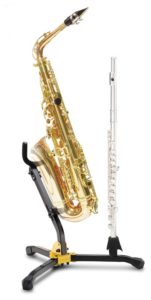
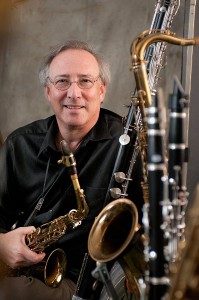
This was how we adapted the concept of not starting saxophone players in beginning band in this particular program. I enjoyed every part of it – the benefits, the process, and the results. How about you and your program? Is this plan something you would consider implementing? If not, is there a way that you might modify it to best work in your situation? Thanks for reading!
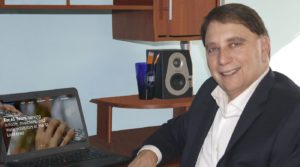
Ray Benton, Technology and Media Specialist for Nottelmann Music, is a veteran band director of 32 years. He built and directed successful programs at Lafayette High School, Windsor C-1 Schools, CBC High School, and Rockwood South Middle Schools. You are invited to contact Ray by email.
![]()

